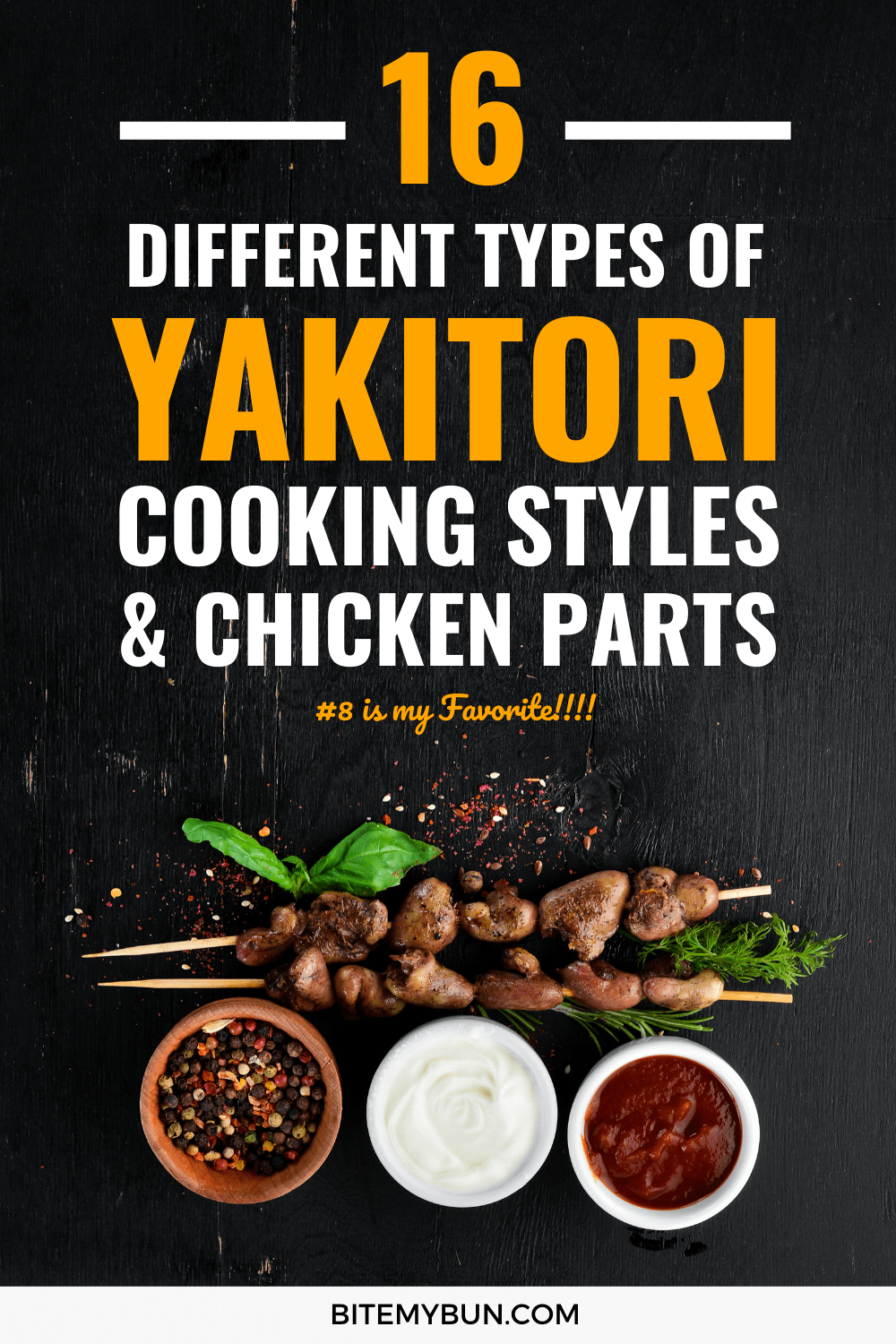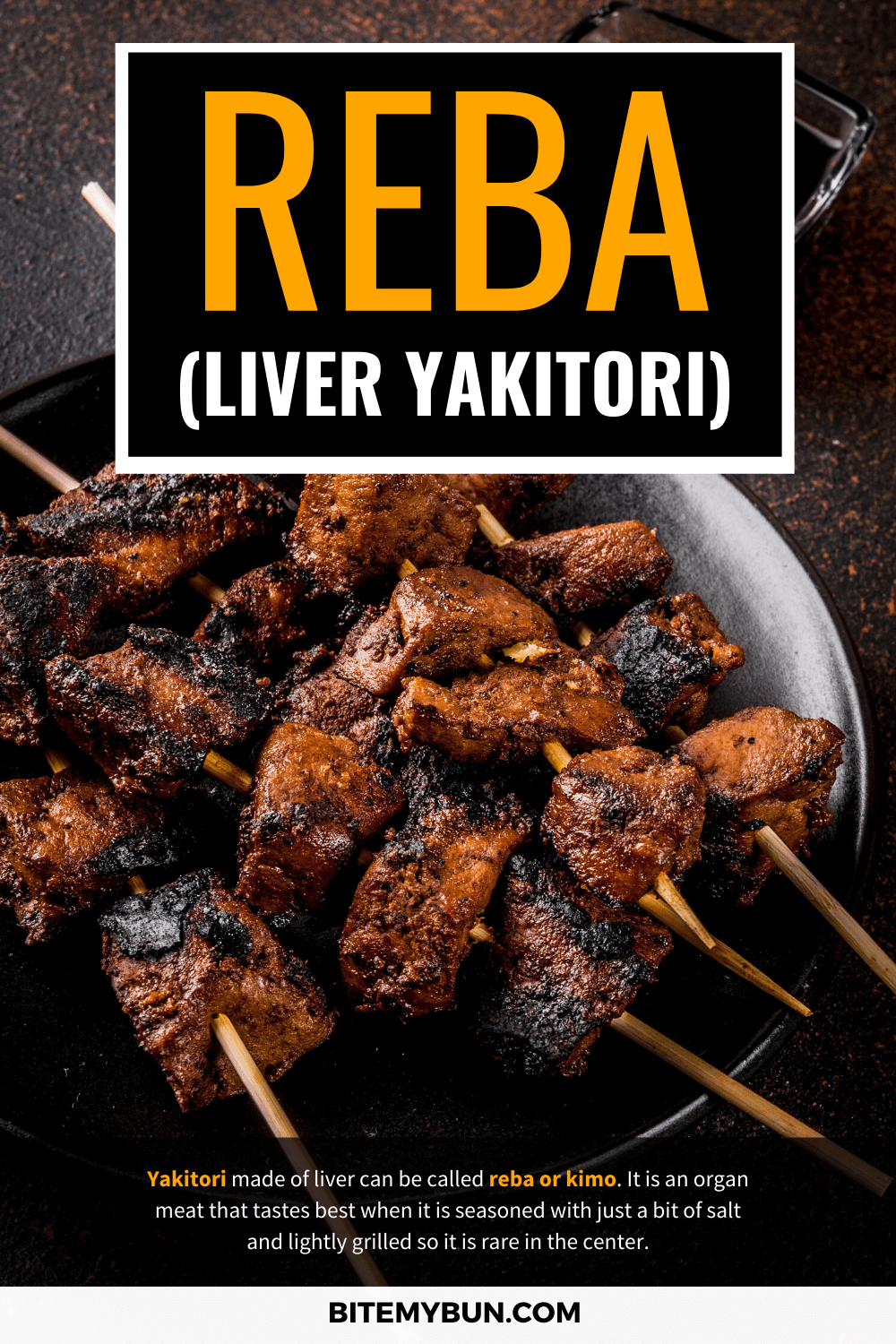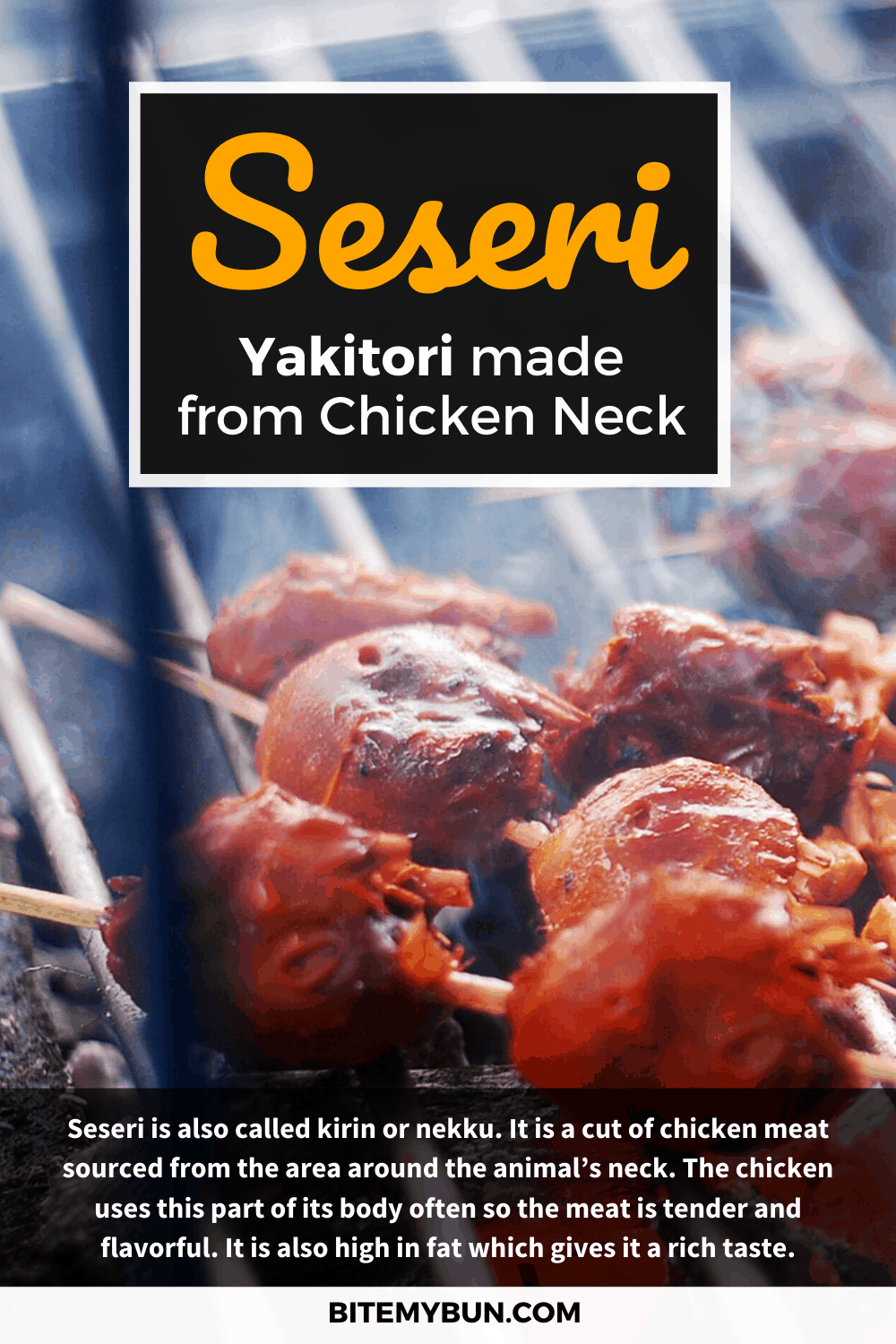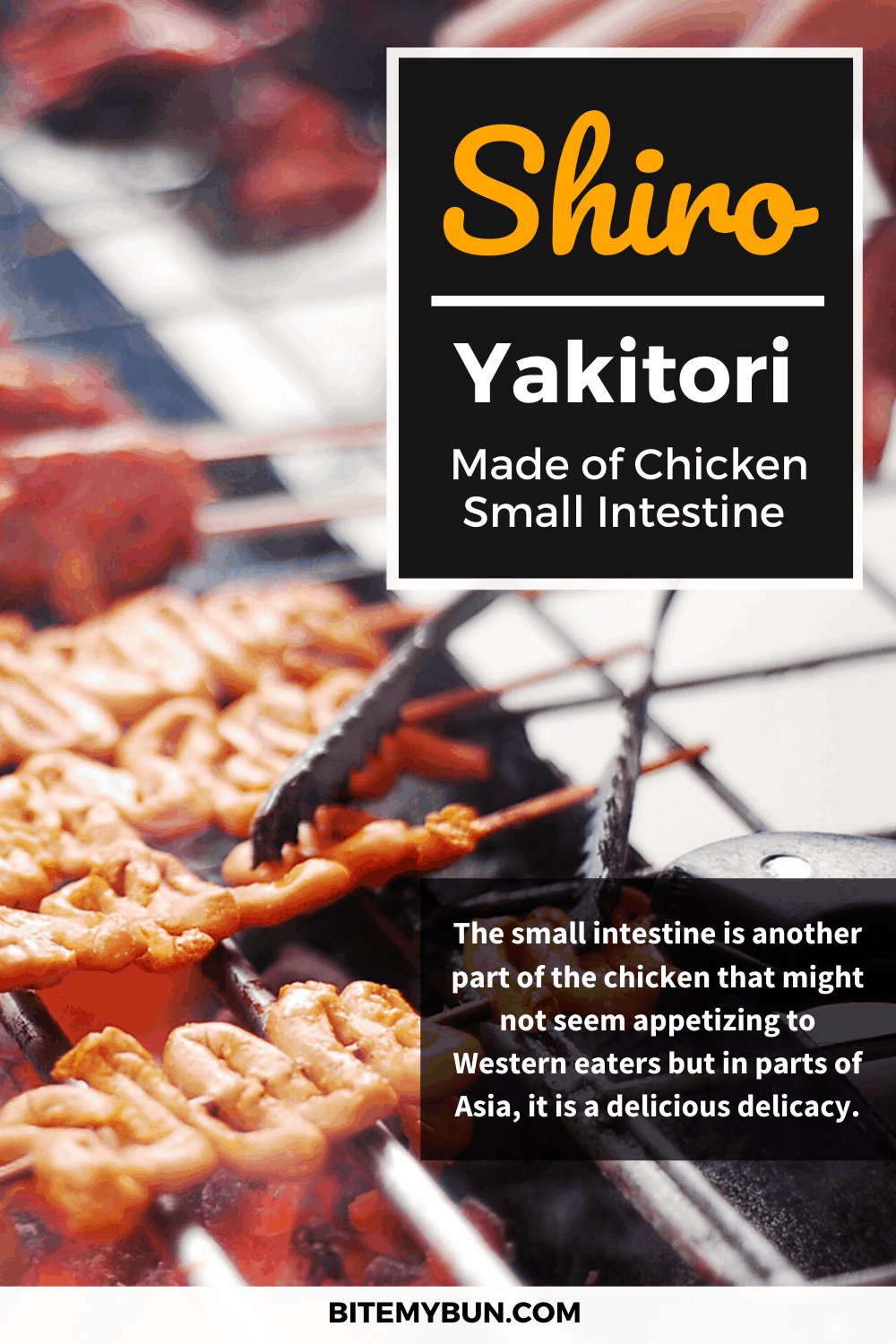16 different types of Yakitori: cooking styles & chicken parts
If you are familiar with Japanese cuisine, I am willing to bet you have tried yakitori at least once. Yakitori literally means ‘grilled chicken’.
It is a bite sized food served on skewers and it is often served at festivals and events.
It is popular in Japan and if you visit the country, you will find that yakitori restaurants are a common site.
Although yakitori translates as ‘grilled chicken’, a variety of meats and vegetables can be used to make this snack. Read on to find out about the varieties that are available.

Check out our new cookbook
Bitemybun's family recipes with complete meal planner and recipe guide.
Try it out for free with Kindle Unlimited:
Read for freeIn this post we'll cover:
- 1 Different types of Yakitori
- 1.1 Mune (Chicken Breast)
- 1.2 Tsukune (Chicken Meatball)
- 1.3 Reba (Liver)
- 1.4 Tebasaki (Chicken Wing Tip)
- 1.5 Tebamoto (Chicken Wing Shoulder)
- 1.6 Torinequi (Chicken and Leek)
- 1.7 Kanmuri (Chicken Comb)
- 1.8 Seseri (Chicken Neck)
- 1.9 Kawa (Chicken Skin)
- 1.10 Gyutan (Beef Tongue)
- 1.11 Shiro (Chicken Small Intestine)
- 1.12 Toriniku (All White Meat Chicken)
- 1.13 Piman (Grilled Pepper Filled with Cheese, Meat and Other Ingredients)
- 1.14 Ginnan (Seeds of the Gingko Biloba Tree)
- 1.15 Nankotsu (Chicken Cartilage)
- 1.16 Sunagimo (Chicken Gizzard)
- 2 Other ingredients grilled over a Yakitori grill
Different types of Yakitori

Mune (Chicken Breast)
Chicken breast is the type of meat most popularly used for yakitori. It is lean, healthy and very tender.
Tenderloin cuts of chicken breast, known as sasami, are often used. When served with grated wasabi, this is a yakitori item called sabiyaki.
Tsukune (Chicken Meatball)
For this type of yakitori, chicken meatballs can be made with any type of minced chicken meat.
Chopped onions and other ingredients like grated ginger and shiso herbs are often added. It can be served as one single meatball on a skewer or as several meatballs.
It is seasoned in a sweet soy sauce called tare and it can be dipped in egg which gives it a creamy flavor.
Reba (Liver)

Yakitori made of liver can be called reba or kimo. It is an organ meat that tastes best when it is seasoned with just a bit of salt and lightly grilled so it is rare in the center.
It is very easy to overcook the meat which will dry it out. It is best to eat reba as soon as it comes off the grill as it may continue to cook and dry out if you leave it too long.
If properly prepared, it will have a rich, creamy texture.
Tebasaki (Chicken Wing Tip)
Tebasaki is prepared using the wing tips that are separated from the chicken’s shoulder. Several of these tips are speared together on one skewer.
Their texture can be described as tender inside with a crispy skin outside. Eating wing tips can be challenging but the Japanese seem to have the system down.
They hold the wing tip upright in their hands and snap off a bit of the cartilage at the top.
That way, they are able to insert the entire tip in their mouths and pull the chicken meat off their teeth. When they’re done, the bone is usually clean!
Tebamoto (Chicken Wing Shoulder)
Tebamoto meat comes from the shoulder of the chicken wing. If you are American, you probably know this cut as the ‘drummette’ or the part used for buffalo chicken wings.
The Japanese love these just as much as the Americans do and often serve them yakitori style in a rich tare sauce glaze.
Torinequi (Chicken and Leek)
Also known as negima or ikada, torinegi is one of the most popular types of yakitori. It’s made with negi (Japanese leek) and served on a skewer with alternating pieces of chicken thigh.
For those that don’t know, leek is a vegetable that looks like scallion but it’s much larger. Its clean flavor provides the perfect balance for the rich taste of the chicken meat.
Bonjiri (Chicken Tail)Bonjiri is chicken tail meat cut and skewered. The cartilage content in this section of meat gives it a bit of crunch.
Chickens move their tails a lot so this piece of meat is very tender and muscular. This is also where the chicken’s oil gland is located.
They use their oil gland to keep their coats waterproof. The oil gland is removed when the meat is cut but it still works to give the meat a unique, juicy flavor.
Kanmuri (Chicken Comb)
You might not think the chicken comb is edible but it is actually thick, tender and a great source of collagen. The meat is skewered and then grilled until it’s crispy.
It’s a rare cut of meat and it’s difficult to find it on most menus so if you are able to find it, take advantage of the opportunity and give it a try.
It also sometimes goes by the name of tosaka or eboshi.
Seseri (Chicken Neck)

Seseri is also called kirin or nekku. It is a cut of chicken meat sourced from the area around the animal’s neck.
The chicken uses this part of its body often so the meat is tender and flavorful. It is also high in fat which gives it a rich taste.
Since there is a limited amount of meat on a chicken’s neck, this type of meat is a rare find so if you see it on a menu, jump at the chance to try it.
Kawa (Chicken Skin)
When used in yakitori, chicken skin is grilled until it’s crispy. It is high in fat and collagen and has a springy texture.
It is great with a cold glass of beer, however, due to its high fat content, it is best reserved for special occasions.
Gyutan (Beef Tongue)
In American culture beef tongue is a bit of an unusual dish. It was slow to catch on in Japan as well but it has grown in popularity and now is eaten in yakitori and many other Japanese recipes.
The meat is lightly salted and skewered until the outside is slightly crispy. It is served in a rich sauce with a twist of lemon.
Shiro (Chicken Small Intestine)

The small intestine is another part of the chicken that might not seem appetizing to Western eaters but in parts of Asia, it is a delicious delicacy.
Shiro is grilled until crispy and has a high fat content that makes it flavorful. It can be served with a variety of sauces.
Toriniku (All White Meat Chicken)
Similar to chicken breast, this is made of extremely lean cuts of chicken that are quite healthy.
The meat can be sourced from any part of the chicken. A rich sauce is often added for flavor.
Piman (Grilled Pepper Filled with Cheese, Meat and Other Ingredients)
Basically, piman is stuffed grilled pepper on a stick. It can be filled with any ingredients you choose.
While cheese and meat are popular additions, it can also be filled with veggies making it a go-to for vegetarian and vegan diners.
Ginnan (Seeds of the Gingko Biloba Tree)
Ginnan is often eaten in Asian cuisine. The skins are removed before cooking. They are rich in starch, beta carotene and vitamin C.
They are often used as a cough suppressant and they have a pungent aroma, a soft, sticky texture and a slightly bitter taste.
When served on a skewer, they make for a highly nutritious type of yakitori. Enoki Maki (Enoki Mushrooms Wrapped in Pork)
Enoki mushrooms are popularly used in Asian cuisine. They are full of vitamins, minerals, amino acids and antioxidants.
Enoki maki yakitori consists of enoki mushrooms wrapped in pork, skewered and grilled. Thy are a delicious and nutritious way to enjoy the dish.
Nankotsu (Chicken Cartilage)
These popular skewers are rich in collagen as well as other essential vitamins and nutrients. The meat is skewered and grilled until it’s golden and crispy.
It can be flavored with soy sauce, red pepper, ginger, mirin, sake, salt and pepper.
Sunagimo (Chicken Gizzard)
Sunagimo may not seem appetizing to some diners but it has a unique, crispy texture and mild flavor that certain people just can’t get enough of.
It is often flavored with just a bit of salt.
Here is master chef Atsushi Kono making 13 skewers out of 1 chicken using all of the different parts:
Other ingredients grilled over a Yakitori grill
Asuparabekon (Asparagus Wrapped in Bacon)
This dish pretty much speaks for itself. It tastes great with a twist of lemon.
Shiitake
Shiitake mushrooms are another kind of highly nutritious mushroom that is very popular in Japanese cuisine.
When served yakitori style, they are grilled and often topped with katsuobushi flakes to provide an umami flavor.
Mentaiko
Roe is the fully ripe internal egg masses in the ovaries of fish. Mentaiko is pollock or cod roe. The roe has a strong spicy taste and is often used to top chicken or pork yakitori.
Chorizo
Chorizo is a fermented Spanish sausage that is often used in Asian cuisine. It has a spicy flavor due to the addition of red pepper.
The Japanese grill the meat and put it on a skewer for a delicious chorizo that is great with a mustard sauce and a squeeze of lemon.
Atsuage (Deep Fried Tofu)
Atusage is a tofu fried in oil. It has a crunchy, nutty texture and it’s great when served with soy sauce and grated ginger.
This type of yakitori is perfect for vegans and vegetarians.
Butabara (Pork Belly)
Butabara is grilled pork belly that is usually marinated in tare, a sauce consisting of soy sauce, mirin and sake. It provides a flavorful type of yakitori few can resist.
There certainly are a lot of types of yakitori available. Which one is your favorite?
Check out our new cookbook
Bitemybun's family recipes with complete meal planner and recipe guide.
Try it out for free with Kindle Unlimited:
Read for freeJoost Nusselder, the founder of Bite My Bun is a content marketer, dad and loves trying out new food with Japanese food at the heart of his passion, and together with his team he's been creating in-depth blog articles since 2016 to help loyal readers with recipes and cooking tips.
